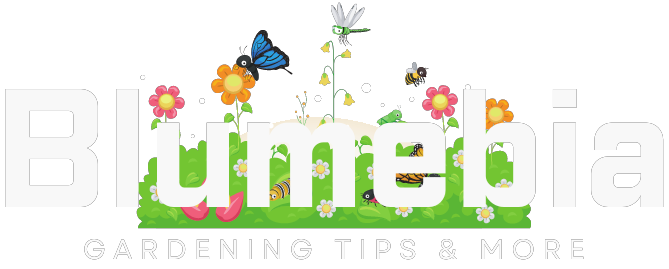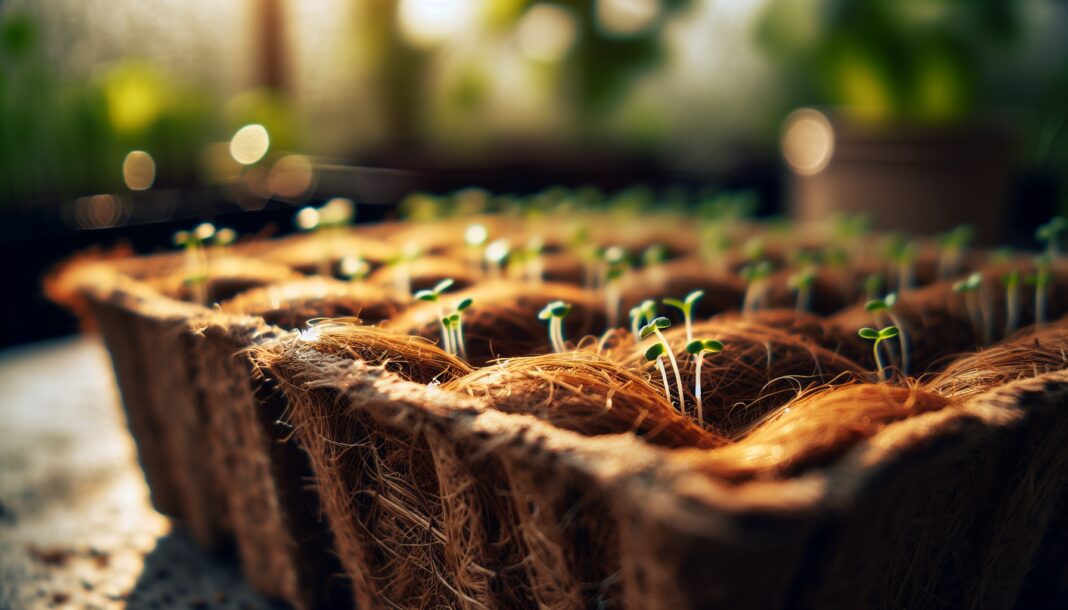Coconut coir is a sustainable and eco-friendly growing medium that enhances seed germination while reducing environmental impact. Made from the fibrous husk of coconuts, this renewable resource retains moisture effectively, providing an ideal environment for seedlings. Research shows that coconut coir improves root development and reduces the need for synthetic fertilizers, making it a preferred choice for gardeners seeking sustainable alternatives. Traditional soil mixtures often lead to excessive water use and compaction, but coconut coir offers superior aeration and drainage. Discover how this natural fiber can revolutionize seed starting while supporting a greener, more sustainable approach to gardening.
What is Coconut Coir and Why is it a Sustainable Growing Medium?
Coconut coir is making waves in the gardening and agricultural world. Its sustainable nature and versatility make it a favorite among eco-conscious growers. This natural fiber extracted from coconut husks is transforming how we think about growing mediums.
Understanding Coconut Coir: Composition and Benefits
Coconut coir is composed of cellulose and lignin, making it sturdy and long-lasting. The balance of these components contributes to its excellent water retention and aeration properties. Unlike some traditional mediums, coir maintains moisture without becoming waterlogged, promoting healthy plant growth. Its pH-neutral characteristic is another advantage, accommodating a wide range of plants. The fibrous texture allows roots to expand easily, enhancing nutrient uptake. Additionally, its natural resistance to pathogens reduces the need for chemical treatments.
Environmental Advantages of Using Coconut Coir Over Traditional Soil
Coconut coir stands out as an eco-friendly choice. Harvested from coconut husks, it is a renewable resource that minimizes waste. Unlike peat moss, which can take centuries to form, coir is quickly renewable. The production of coconut coir has a lower carbon footprint, supporting sustainable agriculture. It’s also biodegradable, returning to nature without leaving harmful residues. As a byproduct of the coconut industry, its use maximizes resource efficiency. By choosing coir, gardeners contribute to reducing environmental degradation and conserving natural habitats.
How Coconut Coir Supports Healthy Root Development in Seedlings
Seedlings thrive in coconut coir, thanks to its unique properties. The medium’s texture allows for optimal root expansion, encouraging strong growth. Coir provides excellent drainage, preventing root rot—a common issue in heavy soils. Its aeration ensures that roots receive enough oxygen, vital for healthy development. Retained moisture keeps roots hydrated without drowning, balancing the delicate needs of young plants. The absence of weed seeds in coir prevents competition for nutrients, enabling seedlings to flourish.
How to Use Coconut Coir for Seed Germination Effectively
Using coconut coir for seed germination is simple yet effective. Its properties make it ideal for nurturing young plants. Understanding how to prepare and utilize coir can lead to successful germination and robust growth.
Preparing Coconut Coir for Optimal Moisture Retention
Proper preparation of coconut coir enhances its moisture retention capabilities. Begin by hydrating the coir block with water until fully expanded. Break the block apart, ensuring a loose and fluffy texture. This process enhances its water retention and aeration qualities. Adjust the moisture level by squeezing the coir; it should feel damp but not soggy. If necessary, mix in perlite for additional drainage. The prepared coir is now ready to create a nurturing environment for seeds.
Step-by-Step Guide to Germinating Seeds in Coconut Fiber
- Select Seeds: Choose high-quality seeds suitable for your climate and desired plants.
- Prepare Containers: Use seed trays or small pots with drainage holes.
- Fill with Coir: Fill containers with prepared coconut coir, leaving space for seedlings to grow.
- Plant Seeds: Sow seeds according to package instructions, ensuring proper depth and spacing.
- Water Gently: Moisten the coir, keeping it consistently damp but not waterlogged.
- Provide Light: Place containers under grow lights or in a sunny location for adequate light exposure.
- Monitor Growth: Keep an eye on moisture levels and adjust watering as needed.
Best Practices for Mixing Coconut Coir with Other Growing Mediums
Coconut coir pairs well with various growing mediums, enhancing their properties. Combining coir with soil boosts aeration and water retention. A mix with perlite improves drainage, perfect for plants prone to root rot. Blending with vermiculite can enhance moisture retention for water-loving plants. Experiment with ratios to find the ideal mix for specific plant needs. Regularly monitor moisture and nutrient levels, adjusting as necessary. This ensures a balanced environment, promoting healthy, vigorous plant growth.
Comparing Coconut Coir with Peat Moss and Other Soil Alternatives
Exploring soil alternatives like coconut coir is crucial for sustainable gardening. Understanding how coir stacks up against peat moss and other options helps make informed choices for environmentally friendly cultivation.
Coconut Coir vs. Peat Moss: Which is Better for Sustainability?
Coconut coir surpasses peat moss in sustainability. Coir is a byproduct of the coconut industry, making it readily available and eco-friendly. Peat moss, however, is harvested from peat bogs, which are vital carbon sinks. The extraction process damages these ecosystems, contributing to greenhouse gas emissions. Coir regenerates rapidly, while peat moss takes centuries to form. Choosing coir supports sustainable practices, preserving natural habitats and reducing environmental impact.
Drainage and Aeration: Key Differences Between Coconut Coir and Soil
Coconut coir offers superior drainage and aeration compared to traditional soil. Its fibrous texture maintains a balance of moisture and air, crucial for plant health. In contrast, dense soils can restrict root growth and lead to waterlogging. Coir’s structure allows excess water to drain efficiently, preventing root rot. It also provides ample room for air circulation, enhancing oxygen availability to roots. These qualities make coir an excellent choice for promoting vigorous root development.
Cost, Availability, and Long-Term Benefits of Using Coir for Seed Starts
Coconut coir is cost-effective and widely available, making it accessible for gardeners. While initial costs may vary, the long-term benefits outweigh the investment. Coir’s durability allows for repeated use, reducing the need for frequent replacement. Its lightweight nature simplifies transportation and handling, saving time and effort. The medium’s ability to improve plant health leads to higher yields and successful harvests. Investing in coir not only supports sustainable gardening but also boosts overall productivity and satisfaction.
Conclusion
Get Coconut coir is a sustainable growing medium made from coconut husks, offering excellent water retention, aeration, and a neutral pH for plant growth. It is an eco-friendly alternative to peat moss, as it is renewable, biodegradable, and has a lower carbon footprint. The material enhances seed germination by providing an ideal balance of moisture, oxygen, and drainage while preventing root rot and pathogens. Mixing coir with other growing mediums like perlite or vermiculite can improve drainage and moisture retention based on plant needs. Compared to traditional soil, coir offers better aeration, cost-effectiveness, reusability, and long-term benefits for sustainable gardening.
FAQ
What are the benefits of using coconut coir for gardening and hydroponics?
Coconut coir offers excellent water retention and aeration. It’s a sustainable alternative to peat moss, providing a neutral pH and natural resistance to pests. In hydroponics, it ensures healthy root growth and maximizes nutrient uptake.
How do you properly prepare and hydrate coconut coir before use?
Start by soaking coconut coir in water until it expands fully. Break apart any large chunks, ensuring an even texture. Rinse thoroughly to remove excess salts, especially if using coir for sensitive plants.
Is coconut coir better than peat moss for soil amendment?
Coconut coir is often preferred due to its renewable nature and prolonged lifespan. Unlike peat moss, it decomposes slowly, retains water efficiently, and supports beneficial microbes, enhancing soil fertility.
Can coconut coir be reused, and how do you maintain its quality?
Coconut coir can be reused several times. To maintain quality, rinse thoroughly to eliminate salt buildup and contaminants. Rehydrate as needed and supplement with nutrients to replenish lost minerals.
Does coconut coir retain water well, and how does it impact plant growth?
This medium holds water effectively, reducing the frequency of irrigation. It promotes healthy root development and prevents overwatering issues, supporting consistent plant growth and improved yields.
Where can I buy high-quality coconut coir for plants and sustainable farming?
High-quality coconut coir is available at garden centers, online retailers, and specialty farming stores. Ensure the product is free from chemical additives and sourced from reputable suppliers for optimal results.



